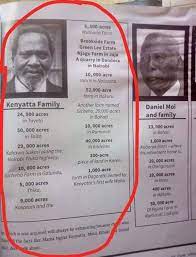Long ago. In the countless suns and moons that have passed. When the lands were raw and uncolonized. The lands after period of ogres, when nature-green plains stretched to meet the Lake of Walule in the West and the overgrown mountainous Masaaba knuckles touched the blue skies to the North. Bukusuland laid unmutilated full of life. Simbikhilia, Chisoko and Kamaninga sang gracefully and Namukhokhome, the green-headed rock reptile turned lazily under the rays of the setting sun.
In the quietly flowing waters of unnamed rivers, Wanakhutu and Mukoye-baka floated with gleam and unrestricted freedom. On the lands, mounting plants, Bees and Butterflies kissed the flowers, energizing the lands.
From the red anthills of the Bukusu Savannah, came the flying ancestors. The White and Brown-winged termites, escaping the hot embers of the underworld. Meeting the fresh air of Mother Earth, proudly showing the glamorous wings, as white as lukochwe mushroom. It was time for a gathering, species from all households. Yabunje, tietie, Ekhima and Embakilia joined the dinner to testify the resurrection of the tiny poor mates – a delicacy. Sweet, till the sun goes down.

But soon, it would not be the birds alone... there came an animal, a bipedal. Clearing trees from the Northwest, came Mubukusu donned in animal skin, a sign of his hunting prowess. He came with a spear, with mooing cattle dispersing off the timid antelopes and hares. And admiring the splendid site of uncivilized land, he rested by the termite hill. He put his milk-guard, by the side. He joined the feast. On his slippery tongue, chiswa, the termite bore an exceedingly unique taste. ‘You shall be my vegetables’, he declared to his heart.
Since the coming of Omusilikwa, the termites have been a great delicacy alongside bubwoba, bukararambi, chifutu, bumekele, and butokha among others. Termites have strengthened his bones, sharpened his vision and helped him bear health children. As an omwayi and omulimi, termites have given Omubukusu the energy for khurunda.
From Basefu, Babuulo, Batilu, Baliango and Bakibayi of the Silikwa Cluster... to Babangachi, Basonge, Bokobolo, Balukulu, Babangachi and Bamakhuli of Bamwalie Cluster....
From Basakali, Bayemba, Bayundo, Bakuta, Babuya, Bakuunga, Basakali and Bakhonjo of Emubalaba ...to Basombi, Bakalangala, Basekese, Batecho, Bamwaya, Bayiitu, Basiime, Bamwaya, and Balunda of Ebunabayi....
From Batakhwe, Bakhurarwa, Bakongolo, Bachibuno, Bakisyayi, Bameme and Bamunaa of Baneala Cluster to Bamuyonga, Basituyi, Bachemwile, Bakhoma, Bakisebe, Batemulani, Bakokho, Balako, and Bamusomi of Bakikayi Cluster....termites were a celebrated delicacy.
The Bukusu Community even to the modern day needs to cherish the uptake of Chiswa (termites) as part of their dietary necessities. From chiswa chinunda, to chisisi and chibilika, termites (eaten raw or roasted) are overwhelmingly nutritious.
In Dietary, Medicinal values of termites, Chakwuma Muanya (2015) writes that among Ibos, Hausa, Annang and Yoruba in Nigeria roasted termites are used an alternative protein source and in treatment of asthma, wounds, malnutrition and sickness among pregnant mothers. In a 2015-study, ‘Evaluation of Nutritional Value of Termites (Macrotermes bellicosus): Soldiers, Workers and Queen in the Niger Delta’ that was published in International Journal of Food Nutrition and Safety, Ntukuyoh, Udiong and Kpan of found that:
Termites were rich in vitamins A and C; where workers had highest vitamin C content and Queen having highest vitamin A. high levels of crude protein found in soldiers, and queen has highest levels of sodium.
In South Carolina, US termites are known for protein and high fat content and other minerals. In Taiwan and Thailand, subterranean termites have been known as part of diet since late 19th C.
Among the Ye Kuana Indians Venezuela, termites are eaten due to their protein and Amino acids content. In the 18th C Norwegian society, termites as a human diet were inspired by Chimpanzees who dug them out of their nests using sticks. And among the Aboriginals of Australia, seasoned termites were a coveted delicacy.
Around the world today, Africa, Asia, Europe and Latin America, entomophagical studies (practice of using insects for human diet) have praised the consumption of termites. Even so, there is a growing pool of entomotherapists (those studying use of insects for medicinal use) that concerns with the benefits of termites in treating influenza, whooping cough, bronchitis and asthma among others.
Indeed, termites are a sweet delicacy. The sons and daughters of the Thigh of the Elephant need to celebrate this God-given delicacy. It is highly likely that reliance on termite diet would help address some of the common health problem of the day.
Have a termiteful weekend, won’t you?














Comments